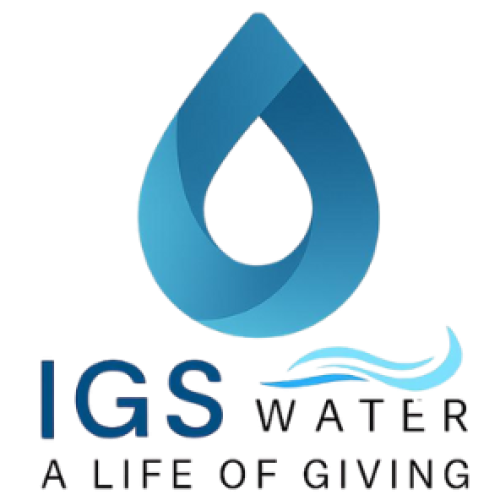For decades, industries and municipalities have wrestled with the fundamental challenge of effectively and efficiently treating water—from purifying drinking water to remediating polluted lakes. The common denominator in most solutions is the need for effective aeration and gas dissolution. Today, a game-changing technology is redefining what’s possible: nanobubbles.
At the forefront of this innovation is the IGS Water Nanobubble Generator, a deceptively simple device that unlocks immense potential in water quality management. This is not just another aerator; it is a fundamental shift in how we introduce and utilize gases in water.
The Science of the Small: What Exactly is a Nanobubble?
To understand the revolution, we must first understand the bubble. A traditional air bubble in water rises and bursts quickly, with most of the gas escaping into the atmosphere. A nanobubble is dramatically different.
A nanobubble is created when a gas, such as oxygen or air, is split into dimensions measured in nanometers—that’s one billionth of a meter. The IGS system achieves this by generating intense shear force at the interface of the object and the adjacent area. This process yields a bubble with unique properties:
- Longevity: Unlike macro or microbubbles, nanobubbles possess neutral buoyancy and a negative charge, allowing them to remain suspended in water for long periods, often weeks or months, without rising and degassing.
- High Solubility: Because of their tiny size, nanobubbles have an incredibly high surface area-to-volume ratio. This vastly increases the contact area with the liquid, enabling more than 90% gas solubility.
In essence, the IGS Nanobubble Generator turns the gas you feed it into a long-lasting, highly effective, dissolved treatment agent.
Pure, Potent, and Clog-Free: The IGS Water Advantage
While the concept of nanobubbles is powerful, the execution is what truly sets the IGS Water system apart. Many existing technologies struggle with purity and operational resilience, but the IGS Generator addresses these head-on.
The IGS device generates pure nanobubbles, boasting a nanobubble ratio of over 99%. This exceptional purity is why the device can consistently deliver and maintain extremely high dissolved gas concentrations.
Even more impressive is its operational design, which makes it suitable for the most challenging environments: No Circulation, No Clogging.
Traditional aeration systems often require constant circulation or struggle when dealing with water containing high levels of suspended solids (SS). The IGS Water nanobubble technology is engineered differently, generating nanobubbles without the need for circulation. This allows it to operate normally even when water with a high solid concentration flows through it. For example, the generator has proven its reliability in a livestock wastewater treatment plant where the SS concentration was over 20,000 mg/L. This durability and simplicity eliminate a major headache for facility managers.
Unprecedented Performance and Simple Setup
The results of using this technology are measurable and dramatic, primarily in the realm of Dissolved Oxygen (DO).
When the IGS Nanobubble Generator utilizes ambient air, the dissolved oxygen solubility soars to over 150%. This translates into maintaining dissolved oxygen concentrations above 13mg/L in water at 20 degrees Celsius. For highly demanding applications, using pure oxygen gas in the IGS system can increase DO levels to a staggering 40mg/L or more. Maintaining such high and stable DO levels is crucial for accelerated biological activity, enhanced oxidation, and rapid remediation.
Despite this advanced capability, the device remains incredibly simple to configure. The entire setup consists of just two parts: a pump and the nanobubble generator. It can use any general pump, including non-self-priming types, making it easy to integrate into existing infrastructure.
The Transformative Benefits Across Industries
The high DO concentration and the unique properties of the nanobubbles deliver a suite of powerful benefits that translate into significant operational savings and environmental improvements.
- Massive Energy Savings: One of the most compelling features is the low energy usage. The IGS Water generator can achieve the desired results while saving up to 70% in energy costs compared to other aeration and oxygenation units. This makes it an exceptionally cost-effective long-term solution.
- Rapid Odor Reduction: In contaminated or stagnant water bodies, foul odors are a common problem. The high, uniform distribution of oxygen rapidly clears the water’s odor, moving quickly toward a no-smell environment.
- Natural Remediation: By saturating the water with highly available oxygen, the system allows nature to do its work. It eliminates the need to continuously purchase and add expensive bacteria or microbes, relying instead on enhancing the natural oxidation and biological processes already present.
- Uniform DO Distribution: The high mobility of the nanobubbles ensures a strong circulation effect that distributes Dissolved Oxygen throughout the water body both vertically and horizontally. This uniform distribution is key to successful remediation and destratification in large water bodies like reservoirs, where Kevlar extensions are available for deep-water applications.
- Aquaculture and Agriculture Growth: In aquaculture, enhanced respiration leads to better growth rates for aquatic life. In agriculture and turf management, the unique properties of nanobubble water can significantly boost turf and plant growth.

